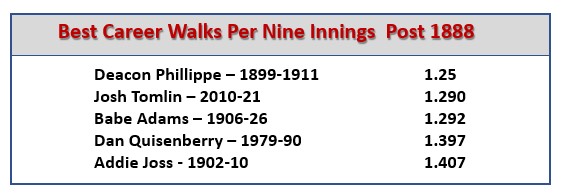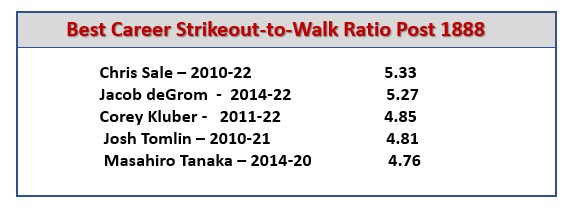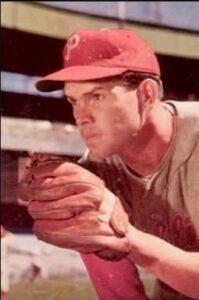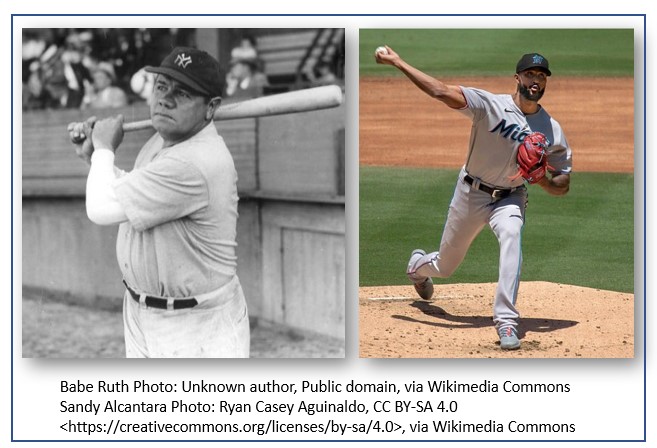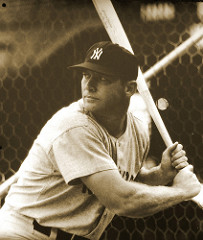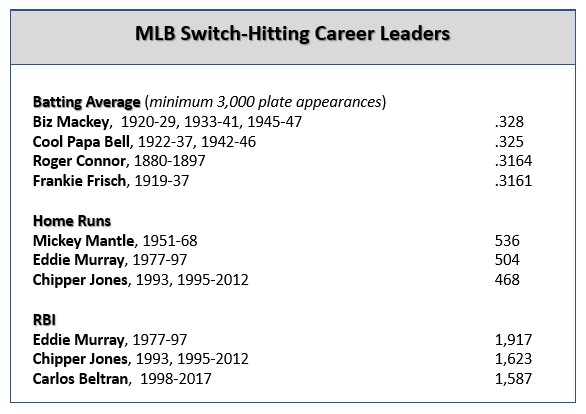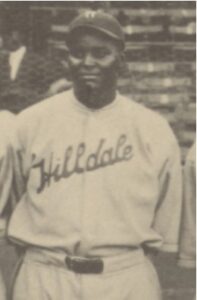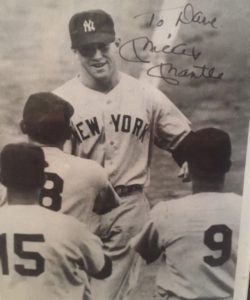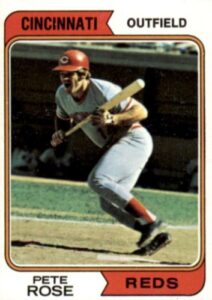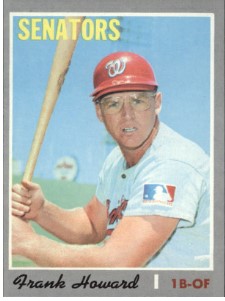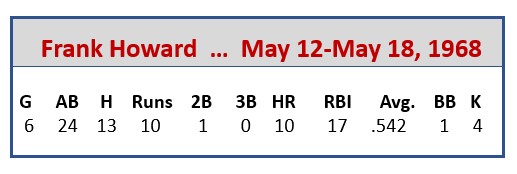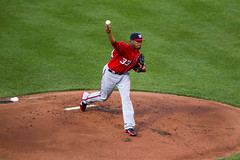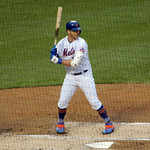This post is another of those Baseball Roundtable “one thing leads to another” random musings. With the Twins having faded from post-season contention, I found myself looking at some past Twins players. One thing led to another and I noted that a pair of Twins’ pitchers hold the MLB single-season records for fewest walks per nine innings and best strikeouts-to-walks ratio (post 1888). This led me to look at the all-time leaders in those “very controlling” categories.
Note: I used post-1888 numbers to reflect rules changes over time. In the late 1870s, it took nine balls outside the striking zone to earn a walk. In 1880, the figure was dropped to eight balls. It slid down to six in 1884; five in 1887; and the current four-ball rule came into play in 1889.
Let’s start with walks per nine-innings (among qualifying pitchers).
Carlos Silva – Single-Season Fewest Walks Per Nine Innings
The single-season MLB record holder for fewest walks per nine innings (among qualifiers) is righty Carlos Silva, who walked just 0.43 batters per nine frames for the 2005 Twins.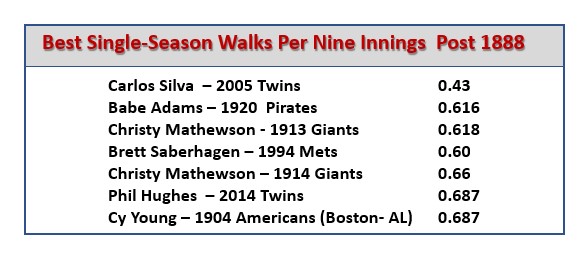
 In 2005, Silva went 9-8, 3.44. He walked just nine batters in 188 1/3 innings (fanning 71) and two of those free passes were intentional. If you are looking for an obscure trivia questions, you might ask “How many right-handed batters did Silva walk in 2005? “ The answer would be one: Tigers’ outfielder Craig Monroe – and that walk, by the way, was an intentional pass. In his 27 2005 starts, Silva averaged seven innings per start and never walked more than one batter in any contest.
In 2005, Silva went 9-8, 3.44. He walked just nine batters in 188 1/3 innings (fanning 71) and two of those free passes were intentional. If you are looking for an obscure trivia questions, you might ask “How many right-handed batters did Silva walk in 2005? “ The answer would be one: Tigers’ outfielder Craig Monroe – and that walk, by the way, was an intentional pass. In his 27 2005 starts, Silva averaged seven innings per start and never walked more than one batter in any contest.
Carlos Silva is the only pitcher – among the top 25 in fewest walks per nine innings – whose record season came after the four-ball walk rule was introduced.
Silva pitched in nine MLB seasons (2002-2010 … Phillies, Twins, Mariners, Cubs), going 70-70, 4.68 in 180 starts and 136 relief appearances. He finished in his league’s top five in fewest walks per nine innings four times.
Side note: Silva is seventh on the all-time single-season list, but all those ahead of him recorded their “controlling” seasons between 1876 and 1880, when it took either eight or nine balls to complete a free pass. The ultimate leader is George Zettlein of the 1876 Philadelphia Athletics at 0.23 walks per nine.
______________________________________
Cy Young led the league in fewest walks per nine innings in 14 seasons
and in strikeout-to-walk ratio in 11.
______________________________________
Deacon Phillippe – Fewest Career Walks Per Nine Innings (minimum 1,000 innings)
Righty Deacon Phillippe played in 13 MLB seasons (1899-1911 … Louisville Colonels, Pittsburgh Pirates). He waked just 363 batters over 2,607 1/3 innings pitched (1.25 walks per nine innings).
Phillippe’s career mark was 189-109, 2.59. He won 20 or more games in six seasons. He led is league in fewest walks per nine innings five times (finishing in the top five eight times) and strikeout-per-walk ratio four times (top five seven times). His best season was 1903, when he went 25-9, 2.43 and completed 31 of 33 starts.
Side Note: Phillippe is 16th all-time in fewest walks per nine frames, but all those ahead of him spent all or the bulk of their careers pitching before the four-ball rule was put in place. In first place on the full list is righty Candy Cummings, who pitched in six MLB seasons (1872-77) and walked just 113 batters in 2,149 innings. Cummings, a Hall of Famer, went 145-94, 2.42 over those six campaigns. From 1872 through 1875, he went 124-72 (averaging 31 wins per season), 2.35, with 193 complete games in 198 starts.
__________________________________________
In the “ stream of “one thing leads to another” thought, I also look a look at pitches who appeared to best combine control with swing-and-miss stuff. They weren’t the stingiest with walks, but had the combination of stuff and command to help themselves a lot more with strikeouts than they hurt themselves with free passes. Here, I found a few more recent moundsmen.
Phil Hughes – Best Single-Season Strikeout -to-Walk Ratio (among qualifiers)
Right-hander Phil Hughes is number-one all time in single-season strikeout-to-walk ratio – at 11.63 for the 2014 Twins. That season, Hughes went 16-10, 3.52, fanning 186 batters and walking just 16 (one intentionally) in 209 2/3 innings. Surprisingly, Hughes’ next best season in strikeout-to-walk ratio was only about half his 2014 ratio – 5.88 in 2015.
*Marco Gonzalez is still active. His stats are through September 25, 2022.
Hughes pitched in 12 MLB seasons (2007-2018 … Yankees, Twins, Padres). He went 88-79, 4.52. He was an All Star in 2010, when he went 18-8, 4.19 for the Yankees. He recorded three seasons of 16 or more victories. The 2014 season is the only one in which he finished in his league’s top five for fewest walks per nine innings, as well as his only top-five season in strikeout-to-walk ratio.
A Quick Turnaround
In the year Phil Hughes set the single-season strikeout-to-walk ratio record, he walked four batters in his first ten innings pitched. He then went on to walk just 12 more batters over his next 199 2/3 innings. He did not walk a batter in 19 of 32 appearances and only twice walked more than one in a game.
_____________________________________
Chris Sale – Career Strikeout-to-Walk Ratio (minimum 1,000 innings pitched)
Southpaw Chris Sale (still active) leads the pack in career strikeout-to-walk ratio at 5.33. In 1,678 1/3 innings pitched, he has fanned 2,064 batters and walked 387.
*Chris Sale, Jacob deGrom and Corey Kluber are active in the major leagues this season.
Their stats are through September 25.
Sale has pitched in 12 MLB seasons (2010-19, 2021-22 … White Sox, Red Sox). The seven-time All Star and has led his league in strikeouts twice (top five five times), strikeouts per nine innings three times (four times in the top five) and strikeout-to-walk ratio once (five times in the top five). Sale has a 114-74, 3.03 record.
________________________________________
Another possible trivia question to fool your friends. Ask them to rank these pitchers in order of career walks per nine innings – fewest to most: Josh Tomlin, Brad Radke, Bret Saberhagen, Rick Reed, Greg Maddux. The ranking is in the order they are presented: Tomlin (1.29); Radke (1.63); Saberhagen (1.65); Reed (1.66); Maddux (1.80).
Primary Resource: Baseball-Refeence.com.
Baseball Roundtable … blogging baseball since 2012.
 Baseball Roundtable is on the Feedspot list of the Top 100 Baseball Blogs. To see the full list, click here.
Baseball Roundtable is on the Feedspot list of the Top 100 Baseball Blogs. To see the full list, click here.
I tweet (on X) baseball @DavidBaseballRT
Follow Baseball Roundtable’s Facebook Page here. More baseball commentary; blog post notifications.
Member: Society for American Baseball Research (SABR); The Baseball Reliquary; The Negro Leagues Baseball Museum.
